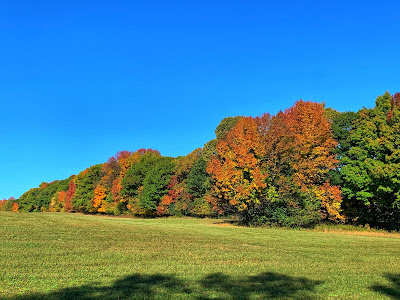Meet Sciurus niger - the Eastern Fox
Squirrel - a large species of tree squirrel native to North America. And we've been observing plenty of harvest activity from this busy rodent.
From time to time this species produces black squirrels with a white belly, nose and white-tipped ears. Thus is the translation from Latin - Sciurus niger - black squirrel. The typical bright orange pelt of this animal and it's loud, scolding call make it an easier visual and audible identification.
From time to time this species produces black squirrels with a white belly, nose and white-tipped ears. Thus is the translation from Latin - Sciurus niger - black squirrel. The typical bright orange pelt of this animal and it's loud, scolding call make it an easier visual and audible identification.
Unlike the Eastern Gray
Squirrel this species has a wider home range and spends more time on the ground
foraging. Like this....
They return with their food to
a preferred dining location. If you
happen-upon a debris midden of corn cobs and split nutshells you will have found
‘that spot’.
This species doesn't hibernate. They do put-on extra fat reserves going into the winter and they also bury food for retrieval at a future date - which probably accounts for all the tiny oak trees popping-up around the joint. This squirreling-away of food for a future meal is called scatter hoarding.
The resident fox squirrels have been making a trip to a neighboring corn field and returning with entire corn cobs. It is unclear if this is for immediate consumption or a winter stash. Either way, it's not a short trip.
These are squirrels on a fast-food mission!
Like the little oaks popping-up here and there I wonder if undiscovered corn will yield a woodland corn crop next year?

















































